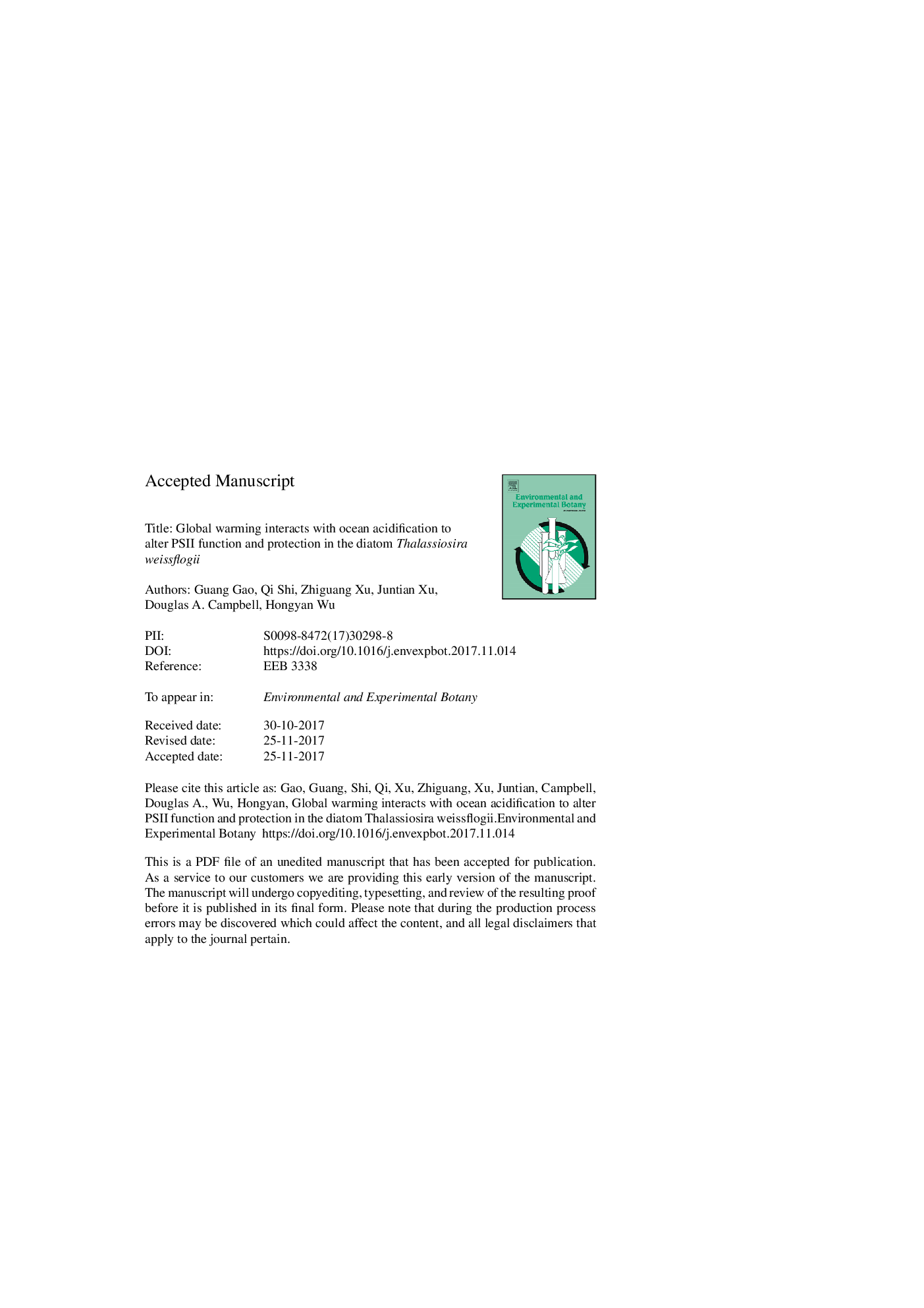| Article ID | Journal | Published Year | Pages | File Type |
|---|---|---|---|---|
| 8887094 | Environmental and Experimental Botany | 2018 | 34 Pages |
Abstract
Diatoms, as important contributors to aquatic primary production, are critical to the global carbon cycle. They tend to dominate phytoplankton communities experiencing rapid changes of underwater light. However, little is known regarding how climate change impacts diatoms' capacity in coping with variable light environments. Here we grew a globally abundant diatom T. weissflogii, under two levels of temperature (18, 24 °C) and pCO2 (400, 1000 μatm), and then treated it with a light challenge to understand the combined effects of ocean warming and acidification on its exploitation of variable light environments. The higher temperature increased the photoinactivation rate at 400 μatm pCO2 and the higher pCO2 alleviated the negative effect of the higher temperature on PSII photoinactivation. Temperature did not affect the PsbA removal rate, but higher pCO2 stimulated PsbA removal. Photoinactivation outran repair, leading to decreased maximum photochemical yield in PSII. The higher pCO2 induced high sustained phase of nonphotochemical quenching when cells were less photoinhibited. The high light exposure induced the activity of both superoxide dismutase (SOD) and catalase (CAT) and the higher temperature stimulated them further, with insignificant effect of pCO2. Our findings suggest that ocean warming, ocean acidification and high light exposure would interact on PSII function and protection, and combination of these three environmental factors would lead to a reduced PSII activity in T. weissflogii. This study provides helpful insight into how climate change variables combined with local stressor impact diatoms' photosynthetic physiology.
Related Topics
Life Sciences
Agricultural and Biological Sciences
Ecology, Evolution, Behavior and Systematics
Authors
Guang Gao, Qi Shi, Zhiguang Xu, Juntian Xu, Douglas A. Campbell, Hongyan Wu,
